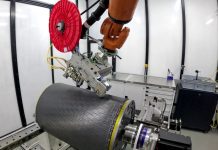
The Council for Scientific and Industrial Research (CSIR), in collaboration with Filament Factory, has unveiled a nano-reinforced polymer composite designed to deliver new levels of performance in advanced materials.
According to CSIR, the innovation demonstrates superior electromagnetic interference shielding, enhanced radio frequency absorption, and improved electrical conductivity, making it suitable for applications ranging from stealth technology to medical implants and high-performance sensors.
“This collaboration marks a significant step forward in South Africa’s materials science capabilities,” said Professor Suprakas Sinha Ray, chief researcher and centre manager at the CSIR’s Nanotechnology Innovation Centre.
“The nano-reinforced composite not only outperforms traditional materials but also opens doors for local innovation in critical industries such as aerospace, electronics, and healthcare.”
CSIR explained that the composite is engineered with a unique structure that allows it to efficiently shield electromagnetic interference.
Its nano-integration also enhances conductivity, making it a potential material for radar-absorbent technologies, conductive medical implants, and next-generation sensors.
“Nano-reinforced polymer composites shield electromagnetic interference and enhance electrical conductivity, making them ideal for stealth technologies, radar-absorbent materials, conductive medical implants, sensors, and electronic devices,” Professor Sinha Ray added.
The material has been developed in both granule and filament form, giving it flexibility for use across manufacturing processes such as injection molding, extrusion, and additive manufacturing.
Its lightweight properties, combined with durability, make it attractive for industries where reducing weight without compromising strength is critical.
CSIR noted that the material’s radio frequency absorption capabilities could support civilian and defence-related technologies by lowering the radar signature of drones, aircraft, and vehicles.
Beyond defence applications, the composite could also be used in radar-absorbent coatings and structures, as well as biocompatible implants like neural interfaces and cardiac pacemakers.
The organisation also highlighted its potential for environmental monitoring and industrial automation through advanced sensor development.


















